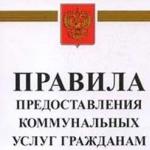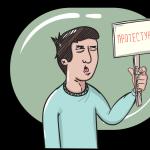Oral folk art is a matter of bygone days, ancient traditions... - presentation. Oral folk art Is everything in the legends true?
Methodological development
literature lesson in 7th grade on the topic “Lore”
Target: acquaintance with the concept of “tradition”, the use of this genre of folklore in the works of writers, acquaintance with heroes - statesmen.
Methodical techniques: brief retelling, analytical conversation, expressive reading.
Equipment: multimedia presentation, projector.
During the classes
Organizing time.
Hello guys! Let's start the literature lesson.
The topic of our lesson is “Oral folk art. Traditions" (Slide 1). Write it down in your notebook.
Think about what we will learn? (Children's answers.)
The objectives of the lesson are presented on the slide so that at the end of our painstaking work on the legends, we can determine whether we managed to do everything we planned. Let's get to know them - Slide 2.
III. Learning new material.
Teacher's word.
Amazing journey through magical world literature we begin with oral folk art, with folklore.
Are you familiar with this term? (Children answer. Slide 3).
The history of folklore goes back to the deep past of mankind and is connected with man’s mythological ideas about the world. All nations had people associated with the creation and performance of folklore works. These are Russian guslars and buffoons, Ukrainian kobzars, Kazakh and Kyrgyz akyns, French troubadours, etc. Also inXVIV. in Rus', even at the royal court, they kept storytellers who knew up to ten works from memory.
Now let's remember the theory of literature. (Slide 4.) Like original works, folklore works are divided into 3 types: epic, lyrical and dramatic. Each of the genera has its own genres (Slide 4). The most ancient genres are epics, legends, songs reflecting religious ideas and beliefs; later historical songs and folk ballads arose. Transfer the information from the slide to your notebook.
As you already know, today we will be working on legends. You were familiar with this genre earlier. What legends do you remember? Maybe someone will try to define this concept? (Slide 5.) Write the definition in your notebook.
- The creators of this literature were simple peasants, artisans, and minor clergy. In ancient times, when the earth itself was still young, legends were taken very seriously. They represented the history of the clan, the state. The older generation carefully passed on these stories to the younger ones, so that they would also carefully preserve them, passing them on from mouth to mouth. And although legends are sometimes filled to the brim with fiction, they still clearly reflect the essence of events.
- What was the main theme of “oral painting”? What do folk storytellers draw our attention to? Let us turn to the “legends of deep antiquity.”
2. Checking the assignment (expressive retelling of legends) + analytical conversation on the works.
1) – At home you became acquainted with legends from the life cycle of Ivan the Terrible and PeterI. Let's start working on these works. Briefly retell the legend “The Accession of Ivan the Terrible.” (Clead 6.)
(1 student retells + performance evaluation)
Who is the hero of the legend? (Ivan IV.) Why did the people, according to legend, nickname him the Terrible? (For cruelty.)
Do you think the plot is true? (No.)
- This story is completely fictitious. In reality, three-year-old Ivan IV inherited the throne from his father Vasily III. The legend “The Accession of Ivan the Terrible” reflects the sympathetic attitude of the people towards the tsar as a fighter against the boyars opposed to him, the conqueror of the Kazan Khanate.
2) A brief retelling of the legend “The Magpie Witch” (1 student retells + evaluation of the performance).
- How does Ivan IV appear before us?
- For what purpose did he decide to destroy witchcraft? Find the quote in the text of the legend. (“For a long time I grieved over the death of the Christian people and finally decided to eliminate the unclean people from this world...”)
- In the legend “The Magpie Witch,” the people show their negative attitude towards witchcraft and sorcery. It also reflects the trend of new times - the struggle of the king himself against dishonesty. This motive is expressed very clearly.
3) - No less interesting is such a character from legends as Peter I. (Slide 7).Let's turn to legend"Peterand a carpenter." (1 student retells + evaluation of the performance.)
- What kind of person does Peter appear to us? (If you do your job poorly, if you don’t know the craft well, then be patient and study diligently. You should be grateful for science.)
- What does the folk storyteller pay attention to? (For the king’s justice. Whether a man or a king takes up a job, do it well. Before mastery, everyone is equal: one must study persistently and diligently, master the skill and improve it.)
III. Studying new topic(pp. 7-8).
1. Reading the article “Traditions”.
2. Conversation on issues.
What new did you learn from the article?
Who are most often the heroes of legends?
Where did these lines come from? (Slide 8.)
And there I was, and I drank honey;
I saw a green oak by the sea;
The cat was sitting under him, a scientist
He told me his fairy tales.
I remember one: this fairy tale
Now I will tell the world...
At the beginning of the poem and at the end of it:
Things of days gone by
Legends of deep antiquity!
(A. S. Pushkin “Ruslan and Lyudmila.”)
Guys, why did I read these lines? (Children's answers.)
Conclusion: legends were used by poets to create works; legends were recorded for subsequent generations images of heroes and historical events.
Legends are usually divided into 2 groups (slide 10): historical and toponymic. We met the first group today: heroes Ivan the Terrible and PeterI- historical. The second group of legends - toponymic - is an ancient, popular variety of legends. They are stories about geographical objects (areas, rivers, lakes, mountains, etc.) and populated areas.
Listen carefully to the toponymic legend recorded in the Saratov region by academician A. A. Shakhmatov. (The teacher reads.)
“I heard from old people about one place that Stenka Razin lived there. This place can now be very well recognized: a huge mountain, similar to a courtyard, its name now is Stone Courtyard, in the middle of it is a hillock, on the hillock there is an oak forest, and in the very middle, at the top near the hillock, three birch trees, under the birches there is a spring. The old people say that robbers lived in that very place, and the outer side of that mountain on one side looks like a gate. And around it there is a yard. At the very top of the mountain there is a forest like a roof, at the bottom it is like a stone wall. This wall is called front side Stone yard. To the side of this yard there are high mountains... The name of these mountains is the Karaulnye Mountains. Old people say that when Stenka Razin lived, robbers on these mountains lay in wait for travelers on the road, and it was as if a chain was stretched from there through the ground. As soon as they saw people passing by, they would pull this chain, and a bell was tied to the ring of this chain. As soon as their comrades hear this bell, they will go out onto the road. And even further to the main road there is a ravine called Bath Ravine, as if they went there to take a steam bath.”
Tell me, what geographical objects were mentioned in the legend? (About the Stone Yard and the Karaulnye Mountains, the Banny Ravine.)
IV. Summing up the lesson + assessing students for analyzing legends.
Remember what goals we set at the beginning of the lesson. (Return to the link on slide 2.) Have we achieved them? (Click on the arrow to go to slide No. 11 “Lesson summary.”)
What new did you learn in the lesson? What did you like? What type of work caused you difficulty?
Summing up the topic “Lore”, I would like to say the following: the people invested all their hopes, ideas, judgments, dreams and fears in oral creativity. But the most important thing, perhaps, is that when reading “the legends of deep antiquity,” in every word we feel the great Russian soul, deeply feeling and experiencing the history of its Motherland.
V. Homework(slide 12):
A written answer to the question “What is the attitude of the people towards the events and heroes of legends (using the example of one legend)?”,
Individual task: a story about a collector of epics.
During the lesson we will get acquainted with legends as a historical genre of Russian prose. Let's consider the classification of legends, find out what they talk about, and whether they can be historical documents. Let's read several legends about Emelyan Pugachev and Ermak.
ON THE. Krinichnaya identifies 8 plot thematic groups (Fig. 2).

Rice. 2. Classification by N.A. Krinichnoy ()
The popularity of legends can be explained by the fact that literacy and books were accessible to few people, but everyone wanted to know their place in life and understand events. Until the 19th century, legends replaced literature, interpreting events of the past and present. Legends tell us about events that cannot be read about in books, but are most often embellished. For example, people believed that in former times giants lived (Fig. 3), which is why large bones are found at battle sites.

Rice. 3. Giant skeleton ()
Folk heroes are endowed with magical qualities, for example, Ermak was considered invulnerable, Stepan Razin was a sorcerer. At the center of events in legends is a bright historical figure - a king, a prince, a general, an ataman, a robber. From them you can learn about great historical events: about the capture of Kazan by Ivan the Terrible (Fig. 4), about the conquest of Siberia by Ermak.

Rice. 4. Capture of Kazan by Ivan the Terrible ()
Aroused interest private life historical figures, for example, the legend about how Peter I baptized the son of a simple peasant, about the 18th century commander Rumyantsev, who was fishing on his estate, about Suvorov’s conversation with the soldiers.
The heroes of legends were strong men and robbers (Fig. 5). Robbers attack people and rob them, hiding treasures by burying them in the ground. Legends are told about bandit villages, whose inhabitants lure travelers to spend the night with them, and at night kill and rob them.

Rice. 5. Robbers ()
Not in all legends, robbers are negative characters; they are often presented as people's defenders who rob the rich and help the poor. Such heroes were Stepan Razin and Emelyan Pugachev (Fig. 6). Many legends about them indicate that they were popular among the common people.

Read the legend “Pugachev and the Cannon” (Fig. 7).

Rice. 7. Legend “Pugachev and the cannon” ()
In the legend, a large role is played by the narrator, who sets out the event and conveys his attitude towards it, and the image of Pugachev is menacing and inspires mystical horror in the reader. Reprisal against a person who did not obey the impostor is natural for that time. The reprisal against the cannon seems meaningless (Fig. 8); here the narrative is colored by the narrator’s irony towards Pugachev.

Read the legend “On the origin of Pugachev” (Fig. 9).

Rice. 9. Legend “On the origin of Pugachev” ()
This legend does not correspond to historical truth: the narrator believes that Pugachev was actually a king, and does not talk about death penalty. Pugachev allegedly comes to Moscow, and the empress cedes the throne to him. People wanted to believe in it.
Folk legends cannot be historical documents, because people tend to embellish the past.
Read the legend “About Ermak’s conquest of Siberia” for yourself. We talked about this historical event in the last lesson, when we analyzed historical songs. Let's draw up a plan for this legend (Fig. 10).

Rice. 10. Plan of the legend “About the conquest of Siberia by Ermak” ()
The main task of the legend is to tell about the history of the development of Siberian lands. But again the events are embellished, nothing is said about Ivan the Terrible’s hostile attitude towards Ermak. For Ivan the Terrible, the goal of the campaign was the development of Siberia, for Ermak it was to gain freedom. In the legend, the boyars and the poor peasant servant are contrasted, the boyars' advice is stupid, and the peasant's advice is practical for the tsar. This legend embodies the people’s dream that the king would appreciate the people’s wisdom and devotion.
Legends are a unique source of epic genres of Russian literature. Writers turn to folk art to create vivid images, for example A.S. Pushkin in the work "The Captain's Daughter".
Bibliography
- Merkin G.S. Literature. 8th grade. Textbook in 2 parts - 9th ed. - M.: 2013., Part 1 - 384 p., Part 2 - 384 p.
- Kurdyumova T.F. and others. Literature. 8th grade. Textbook-reader in 2 parts, Part 1 - 12th ed., 2011, 272 pp.; Part 2 - 11th ed. 2010, 224 p.
- Korovina V.Ya. and others. Literature. 8th grade. Textbook in 2 parts - 8th ed. - M.: Education, 2009. Part 1 - 399 pp.; Part 2 - 399 p.
- Buneev R.N., Buneeva E.V. Literature. 8th grade. A house without walls. In 2 parts. - M.: 2011. Part 1 - 286 pp.; Part 2 - 222 p.
- Toposural.ru ().
- Sokrnarmira.ru ().
- Nsportal.ru ().
Homework
- What is legend?
- How can we explain the popularity of legends in their time?
- Why cannot legends be considered a reliable source of historical events?
Preview:
To use presentation previews, create a Google account and log in to it: https://accounts.google.com
Slide captions:
Oral folk art Traditions
Folklore - oral folk art Folklore (eng. " folk wisdom") A set of poetic works created among the people, existing in oral form. 2. Oral folk poetry
Features of folklore Collectivity (there is no specific author, the author is the whole people) Oral form of existence ( minor changes when retelling) Traditionality (folklore works are passed down from generation to generation, preserving the traditions of the people)
Genres of folklore folklore proverbs sayings song saying tale fairy tale epic with reading room nursery rhyme legend
Tradition is a genre of folklore. This is an oral story that contains information about historical persons and events passed down from generation to generation. Legends often arise from eyewitness accounts.
Types of legends Historical (about Ivan the Terrible, Peter the Great); - Toponymic (stories about geographical objects (areas, rivers, lakes, mountains, etc.) and settlements); Church.
Historical legends The first historical legends are about Rurik, the founder of the first princely dynasty “The Arrival of Rurik in Ladoga” by V. M. Vasnetsov.
Historical legends A cycle of legends about Ivan the Terrible
Historical legends Legends about Peter the Great
Toponymic legends There is a legend about the founding of Kyiv. Kyiv was allegedly founded by Prince Kiy, who had brothers Shchek and Khoriv and a sister Lybid. The Shchekovitsa and Khorivitsa hills and the Lybid River were named after them.
Enriching your speech Explain the meaning of phrases Contains information The ancestor of the first princely dynasty Cycle of legends Peter's era Looseness in the behavior of heroes Farmers Craftsmen Contains news, information about something The princely family came from this man, i.e. he was the first to receive the princely title A number of works of art, united by community characters, topics The years of the reign of Peter the Great until his death Free and relaxed in his behavior with people A peasant engaged in arable land. Relating to artisans, craftsmen, working people.
On the topic: methodological developments, presentations and notes
Presentation for a literature lesson, grade 11, topic "Russian literature of the late 19th - early 20th centuries. Traditions and innovation."
The presentation will help the teacher illustrate a lecture on the topic "Russian literature of the late 19th - early 20th centuries." The material contains main points, photographs....
Literary quiz for a general lesson in 6th grade in the sections: “Oral folk art”, “Old Russian literature”, “Russian literature of the 19th century”.
A literary game for a general lesson in the 6th grade provides an opportunity to test knowledge in the sections “Oral Folk Art”, “Old Russian Literature”, “Literature of the 18th, 19th Centuries”...
Presentation for a 6th grade literature lesson on the works of N.V. Gogol.
This presentation will help provide information about the life, literary work, friendship of N.V. Gogol....
Legends as a genre of Russian oral folk art
Performed
teacher of Russian language and literature
MBOU secondary school No. 32 of the city of Bratsk
Tugolukova Elena Nikolaevna

What's happened?
Tradition is a genre of folklore non-fairy prose that develops historical themes in its folk interpretation.
Legends tell about events or incidents that are considered reliable and genuine.

About what?
Themes of legends:
- story
- historical figures
- origin of names
Legends contain memories of ancient events, an explanation of some phenomenon, name or custom.

About what?
Legends often talk about famous events of the past:
- about the conquest of Siberia by the Cossack ataman Ermak;
- about the founding of St. Petersburg by Peter the Great;
- about Suvorov's crossing of the Alps;
- about Napoleon's campaign in Russia in 1812. and others

Heroes of legends
Historical figures:
- kings
- generals
- military figures, etc.

Is everything true in the legends?
Legends do not always provide reliable information. There is a lot of speculation in them.
Thus, legends were told that in ancient times there lived not ordinary people, but giants. Therefore, at the sites of Russian battles with enemies, bones of enormous size could allegedly be found.

Similar genres
Close to legends tales And happened .
These are stories about a meeting with evil spirits (goblin, merman, kikimora, brownie).
If an eyewitness himself narrated a meeting with evil spirits, then such stories were called stories, and if the narrator told about what happened to others, then these stories were called former people .

"Poll"
1. What are legends?
2. What do the legends tell about?
3. Is everything in the legends true?
4. What are etiological legends?
5. Name genres close to legends.
1 slide
Lesson – KVN General lesson on the topic “Oral folk art” Prepared by the teacher primary classes Municipal educational institution "Rakovskaya main" comprehensive school Buinsky district of the Republic of Tatarstan" Nesterova Tatyana Petrovna

2 slide
Competition "Crossword" Folk art of words - songs, riddles, proverbs, fairy tales, legends, epics. Solve the crossword puzzle (page 51 of the textbook) and you will find out what else is called oral folk art. Answer: folk art is also called folklore

4 slide
Competition “Finish the proverb” Labor feeds a person, but... laziness spoils him. Once you lied, you became a liar forever. He who does not love others... destroys himself. Finished the matter - ... walk boldly. A person gets sick from laziness, but... from work he gets healthy. It is bad for him who...does no good to anyone. Be patient yourself, and... don’t give anyone else away.

6 slide
“Don’t drink, Ivanushka, if you’re tired...” And my brother drank it all to the bottom. “Don’t drink, Ivanushka, you’ll become a little goat!” - Sister Alyonushka is crying.

7 slide
The people are surprised: The stove is moving, the smoke is coming out, And Emelya is eating big rolls on the stove! The tea is poured on its own according to his wishes, and the fairy tale is called... “At the command of the pike.”

8 slide
A girl is sitting in a basket with a bear behind her back. He himself, without knowing it, carries her home. Well, did you guess the riddle? Then answer quickly! The title of this fairy tale is... "Masha and the Bear"

Slide 9
Skok - skok, skok - skok - Through the sea and the forest! Along the way I found the Firebird and a beautiful maiden, but it was not in vain that I managed to deceive the stupid king. So Ivanushka was helped by the Clever little horse, known to everyone... The Little Hunchback

10 slide
Competition “What is a fairy tale?” Compose full definition fairy tales. Key words will help you with this: this is a work; a wonderful, unusual thing is depicted: it used to be passed down from mouth to mouth 2. Determine the beginnings and endings: “Far away, in the thirtieth state...” “Once upon a time...” “They began to live and live and make good things...” “I was there, I drank honey and beer, it flowed down my beard, but it didn’t get into my mouth...”






